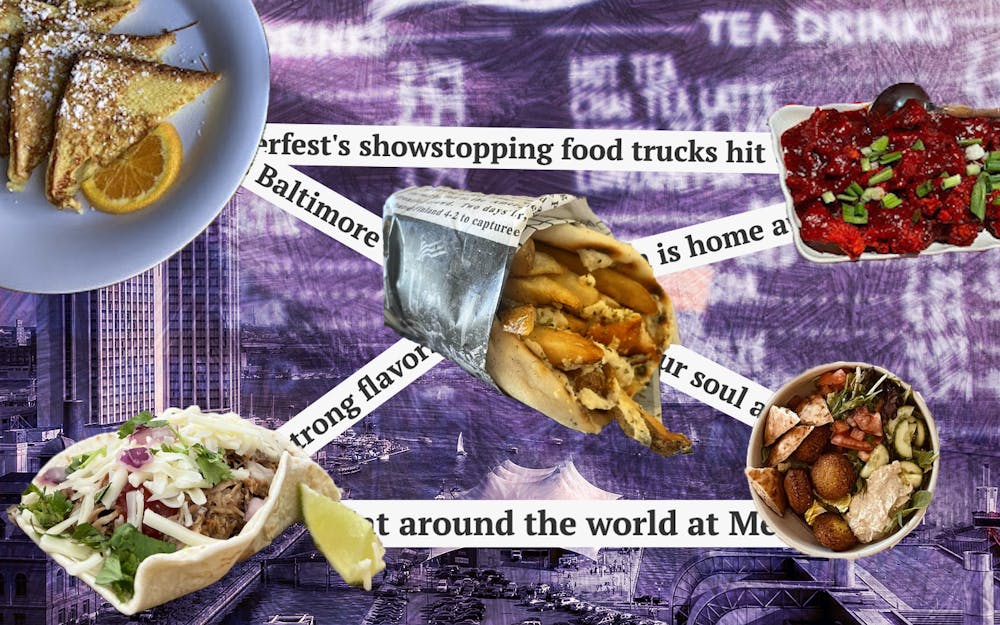Read any major listicle about the top “food cities” in the U.S. and you will seldom find Baltimore in the conversation, let alone even in the top 25. As a somewhat biased party who has tried, loved and written about a whole bunch of restaurants in Baltimore, I’m frustrated by this exclusion.
Symone Phillips, who is best known as @CharmCityTable on Instagram and Twitter, has come to Baltimore’s defense as an underrated food city through her content. She and many other food influencers share their abounding knowledge of the city’s food and drink landscape to set the record straight: Yes, Baltimore has amazing food, Instagrammable dishes and plenty of promise in the culinary scene.
To be a food city certainly requires no explicit or mandatory qualities, but it seems people generally tend to have a sense of what it entails. Terrence Henry in The Atlantic outlined some criteria for qualifying a food city, including the vibrancy of the street food, the connection to the local ways of life and the ability to keep patrons on their toes and consistently provide a good meal.
By this standard Baltimore surely checks plenty of boxes. Every day Hopkins students can enjoy a spread of delicious food trucks in front of Homewood campus, which are just a few of the phenomenal local trucks you can find around the city.
The robust fine dining scene has deep connections to local ingredients and sustainable restaurant practices, like Cosima where fresh herbs grow onsite or Mera Kitchen Collective where chefs created a free meal donation service during COVID-19.
There are a myriad of dynamite spots that put no strain on your wallet, like the perfect pita wraps of Souvlaki or generous wings and ribs platters from Chef BobbyD’s. Top-notch cuisines range from Italian to Korean to Afghani, with delicious spots everywhere in between. So where’s the disconnect?
In many respects Baltimore is often overshadowed by its neighboring Washington D.C., which currently finds itself as a popular choice for the food city to keep an eye on. It’s also no secret that Baltimore gets an unfair national rap through notoriously negative news coverage, often focusing on recent homicides and crime above all. While these unfortunate facts could certainly be a contributor, there might be a more substantive argument lying in wait.
WalletHub employed a more empirical method for measuring the best food cities by weighing affordability against diversity, accessibility and quality. Their analysis involved a broad swath of food-related questions, including the availability of grocery stores, access to fresh food and the presence of specialty food stores like butchers and breweries.
Per their metrics Baltimore is ranked 85th nationally among food cities. Given that food access was taken into account and Baltimore contains many “healthy food priority areas” where access to affordable and healthy food is minimal, I was not surprised by the city’s rank. The News-Letter’s coverage in the Leisure section even reflects that a high proportion of the city’s dining options are in the affluent, food-secure and predominantly white parts of the city.
While I do not believe that these metrics are the reason why most people don’t include Baltimore in the food city conversation, WalletHub’s decision to factor them in prompts reflection on the notion of the food city as a whole.
Of course WalletHub’s list is not definitive, and the higher-ranked cities possess a mostly inverse relationship between affordability and the other metrics. But if Baltimore is to truly be considered a food city, it has to be so for all of the people who live here.
The dichotomy of Baltimore is not unique. The highly saturated food and travel show market has proven that there are laudable restaurants and chefs in every corner of the country, but they coexist nationally with 34 million food-insecure Americans.
By addressing food insecurity in a substantive way, Baltimore can demonstrate a commitment to prioritizing food for all of its residents. Through local farms and mutual aid initiatives like the Baltimore Community Fridge, so many Baltimoreans exemplify a deep compassion for the community through their work. Supporting and furthering these efforts will invariably even out the mismatch in resources.
To return to my initial question, “Is Baltimore a food city?”
The answer is “if it wants to be.”
The restaurant-centric criteria have arguably been met, but the opportunity to be a holistic food city for all people will earn a decisive “yes” from me.





